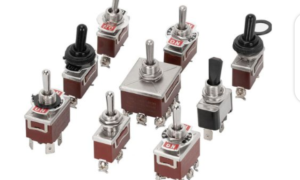An expert will know how to get the most out of any pressure washer. But, many of us don’t even know how to hold the machine, let alone clean challenging surfaces spotless in record time.
Just because you aren’t an expert doesn’t mean you remain stuck to old brush-and-soap ways for cleaning jobs. I shared a couple of essential tips for beginners when using a pressure washer to help you newbies learn how you can peel nasty caked-on filth from around the house. You can call it a crash course that will give you rudimentary information to help you get going.
Essential Tips for Beginners when Using Pressure Washer
Here are some tips for beginners when using a pressure washer to ensure they achieve maximum performance with zero damage.
Kind of Pressure Washer
Pressure washers are either gas-powered or electric-powered. Gasoline washers produce high PSI and GPM and are best for large-scale projects. They also require regular maintenance and produce fumes and loud noise.
Alternatively, electric pressure washers have lower power and portability, making them suitable for light-duty use. However, they’re quieter and maintenance-free.
As a beginner, if you have to occasionally clean a small patio, deck or household items, a light-duty electric washer under 2000 PSI will suffice.
Selection of Nozzle
The nozzle determines the angle and intensity of the water spray. Lucky for you, these spray tips come in universal colour coding.
Red: Narrowest nozzle of 0 degrees.
Yellow: Stream with a 15-degree angle.
Green: 25-degree angle – for household applications.
White: 40-degree wide spray for fragile surfaces, e.g. window panes, blinds, flower pots etc.
Black: 65-degree for softest spray, suitable for soap or detergent application.
Turbo: Also called rotary nozzle. It produces a 0-degree stream. It is ideal for challenging stains and grime build-up.
Start with the white nozzle on a test surface if you are a novice user. You can adjust the tip angle when needed.
Use of Attachments
Your pressure washer might contain:
Expandable Wand: It allows you to clean high-up surfaces. For instance, use it for tall windows and second-floor surfaces.
Soap Tank: A detergent tank attached to the washer allows you to add soap solution to the water stream to clean greasy and oily stains; use the right spray tip for this application to avoid damaging your property.
Pressure Washer Broom: It converts a single stream into multiple water streams (2 or 3) to enhance power and cleaning area, allowing you to finish a job faster.
Safety Tips for Pressure Washing
Pressure washing can cause harm if you are unaware of critical safety tips.
-
Personal Protection Equipment (PPE)
A pressure washer can cause severe cuts and lacerations if accidentally pointed toward your body. You can prevent painful trips to ER by wearing protective equipment. It includes work boots, pants, safety goggles and gloves.
You must wear ear protection when using a gas pressure washer. That’s because gasoline washers generate obnoxious noise, putting your sense of hearing through hell if you don’t have protective earmuffs.
-
Avoid Getting Close
Maintain approximately 18 inches of distance between the spray tip and the surface you plan to clean because the surprise kickback is forceful – it can push you back several inches. You may fall if the surface is slippery.
-
Hold with Both Hands
Hold the pressure washer wand with both hands to prevent it from flying out of your grip and causing havoc at the work site. Use a single hand for grip only when you have gained confidence through experience.
-
Avoid Ladders
As I said earlier, a pressure washer gives an enormous kickback when turned on. Avoid working from ladders with the machine because falling from a height may cause serious bodily harm, even fatality in case of severe head injury. Always stand on the ground and use the extension wand to access high-situated surfaces.
-
Avoid Certain Surfaces
Avoid pressure washing surfaces painted decades ago because the paint layer will start chipping. Paint before the 1980s used lead, and chipped lead particles are detrimental to health if inhaled accidentally.
Besides, an incorrect tip can damage concrete surfaces. Therefore, read the manual first and start with a wide nozzle when cleaning a new surface. Adjust the spray tip and distance accordingly.
-
Avoid Gas Washer Indoors
Avoid using gas-powered pressure washers in enclosed constructions because they produce toxic fumes that cause several health problems if inhaled. Moreover, their loudness grows more obnoxious in close structures due to echo – which may damage hearing if you aren’t wearing ear protection.
Conclusion
A pressure washer can quickly become messy if you are a newbie who doesn’t know how to tackle the machine. I shared fundamental pieces of information, critical nonetheless, to ensure you clean the already existing filth instead of making more mess. The safety tips recommended by professionals will help you get the tasks done without any damage.



































